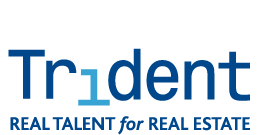
For decades, the 10- or even 15-year lease was the foundation of the office market. It gave landlords certainty, provided investors with confidence and allowed occupiers to put down roots and shape a space as their own.
Wybo Wijnbergen, chief executive of infinitSpace
But the world of work has changed. The rise of flexible workspaces, hybrid working and fast-changing business needs has led to a stark polarisation within the office market.
Some landlords still pursue long-term security – and understandably so, given the stability that has provided in the past. But others have swung to the opposite extreme, offering pay-as-you-go models where desks or meeting rooms can be booked by the day or even by the hour.
This polarisation has created a significant challenge in the workspace market, in the form of a misalignment between what some landlords are offering and what occupiers now require. Landlords, often locked into leases that no longer fit today’s realities, face vacancy and underused space, while businesses are tied into agreements that don’t match their evolving headcounts and working patterns, paying for space they don’t fully use. Both sides lose.
By offering occupiers clear paths to scale up or down without friction, landlords can retain clients
It is important to stress that landlords (and asset managers) are not the problem. They are in a uniquely demanding position, having invested heavily in assets, often backed by debt requiring predictable cashflow. Stability matters. Long-term tenants bring assurance and allow landlords to plan for the future, and for decades this was the accepted norm, so suddenly shifting towards a more flex-centric office portfolio can be daunting.
Yet occupiers’ priorities have shifted. For many start-ups and enterprises, committing to an office for 10 years does not make practical or financial sense. They want the ability to adapt their footprint as circumstances change. Moreover, they expect a higher standard of service and experience, seeing the office not just as a place to sit, but as a destination worth the commute.
Flex formula: office landlords can secure a wider tenant base by including an element of flex workspace
As is often the case with polarised views, the right answer is somewhere in the middle. And this is true in the workspace market.
Both the long-term lease and super-flexible model can thrive in the same building. Take the example of a 10-floor building: on floors one and two there can be co-working spaces with hotdesks, meeting rooms and breakout spaces, all available to be hired on a pay-as-you-go model; floors three, four and five can offer smaller private offices with additional breakout spaces, available on flexible monthly contracts; and on the top five floors, enterprise clients can take larger spaces while committing to three- to five-year agreements, gaining customisation and control over their space while still enjoying the benefits of a service-rich environment.
Resilient tenant base
This will cater to freelancers, start-ups, SMEs and enterprises, bringing together both ends of the polarised market. Long-term tenants bring stability and predictable revenue. Flexible users generate vibrancy and community, often providing a pipeline of future tenants who may one day commit to larger spaces. Together, they create a far more resilient tenant base than relying on one model alone.
This approach also keeps landlords competitive. By offering occupiers clear paths to scale up or down without friction, landlords can retain clients as their needs evolve, rather than risk losing them to another building. At the same time, occupancy data can guide decisions about how to adjust layouts and offerings to reflect real demand.
Crucially, this model enhances rather than undermines the value of long leases. Many corporates will continue to seek certainty and landlords should continue to provide it, albeit on a five- or seven-year, rather than 15-year, lease. When those tenants share space with flexible office users, the building becomes livelier, more efficient and more future-proof. Services such as hospitality, wellbeing amenities, technology to foster community and enable seamless use of the entire building and curated events strengthen the overall proposition, making the workplace more attractive to everyone.
The debate about 10-year leases and pay-as-you-go models has been framed as a binary choice. In reality, the office market of the future must be plural. Landlords can meet today’s challenges not by taking sides, but by offering a spectrum of options within the same asset.
Wybo Wijnbergen is chief executive of infinitSpace




 Follow us on Twitter
Follow us on Twitter
 Follow us on LinkedIn
Follow us on LinkedIn
